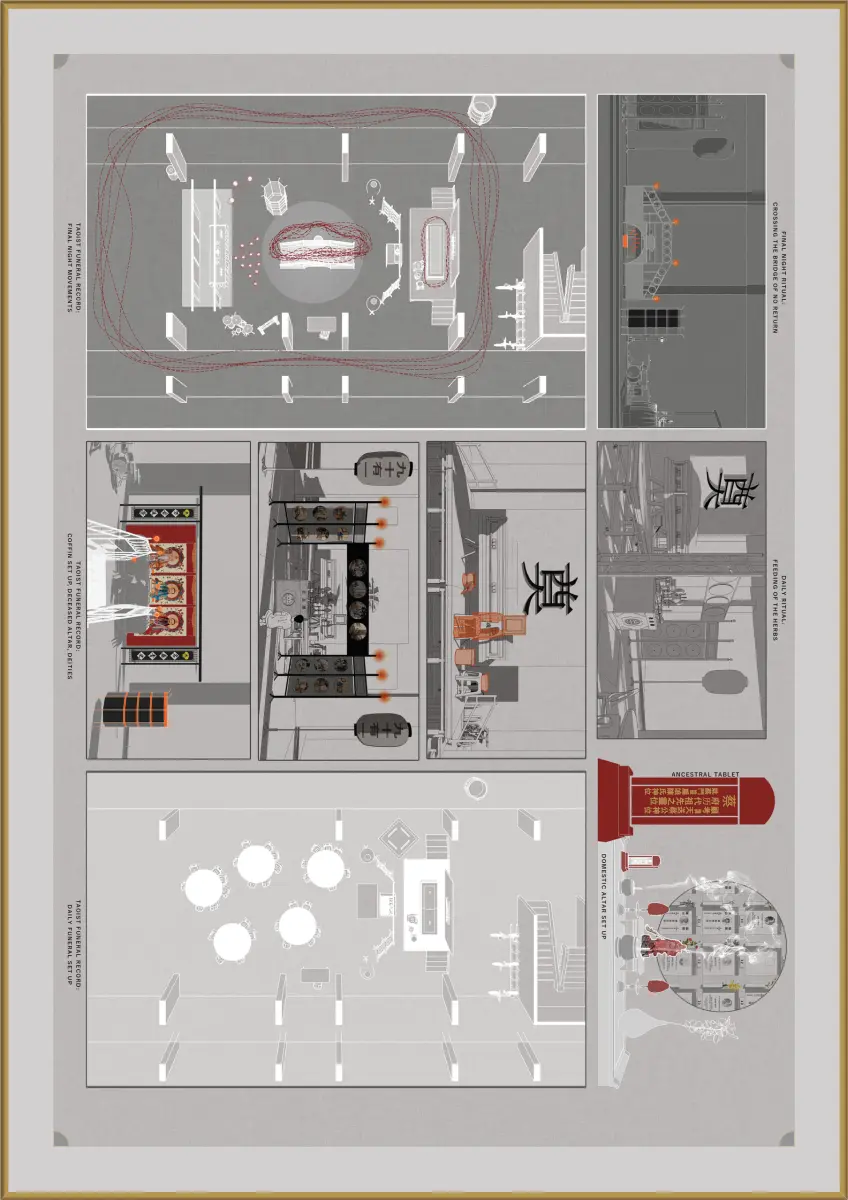
Rituals Reconsidered
BY Bena Chua
SUPERVISED BY Prof. Ho Puay Peng (Dr.)
STUDIO THEME CITY - CULTURE - CONSERVATION
Abstract
In 1982, the success of the state’s attempt to convert burial as the main mode of disposal to cremation in is often seen as a reflection of the weaking hold of “traditional” ideas and beliefs concerning death and the afterlife among Chinese Singaporeans. The thesis borrows records of Chinese death rituals in Singapore as a lens to understand the significance of Chinese values highly regarded their culture. The project also emphasizes on the importance of maintaining solidarity in the family through the efforts of commemorative rituals performed during funerals and mortuary ceremonies. In essence, it will bring to light the act of “remembering” that is the symbolic cement holding together a structure of family and lineage that is one of the foundations of Chinese culture.
The nature of Chinese death rituals are malleable by nature, in that they are not anchored down to a textbook nor canonical rules and teachings. For the most part, it is highly pragmatic and rely on oral traditions, thus allowing changes to be easily introduced and accommodated. Therefore, when modernity suggests impracticalities when performing rituals in its “original” form, the rituals avail themselves to be manipulated with no major dissonance. While these forms have changed, the rationales and meanings behind the performances of these rituals have not. Understanding the rational behind these rituals will allow architecture to appropriately “repackage” these intangible markers as they continuously adapt to Singapore’s changing social tapestry, thereby steering the evolution of tradition in the right direction. Thus, this thesis project will highlight the importance of remembering the ghosts of our ancestors, and the stories of the people who came before us.
Supervisor Comments
In order to provide a respectful and meaningful ambience for seeing the loved one off, Bena considered the fundamental elements in a funeral ritual and proposed the facilities that will both dignify the ritual while allowing the family members the moments and environment to grieve and celebrate the life of the deceased. The strategy of using the landscape of remembrance with the didactic components of Haw Par Villa has yielded a seamless transition between the living and the afterlife. The crafting of the structures and passage for ritual results in the creation of spaces with quiet sophistication.
- Prof. Ho Puay Peng (Dr.)